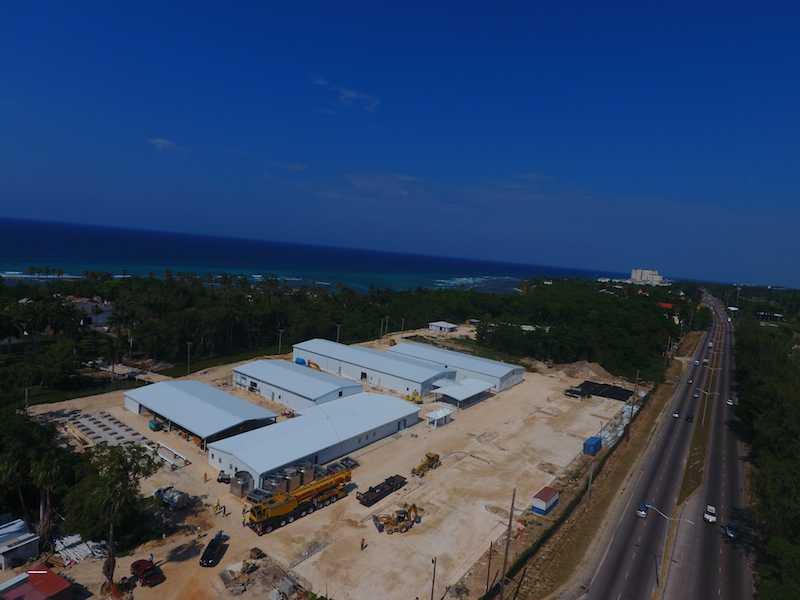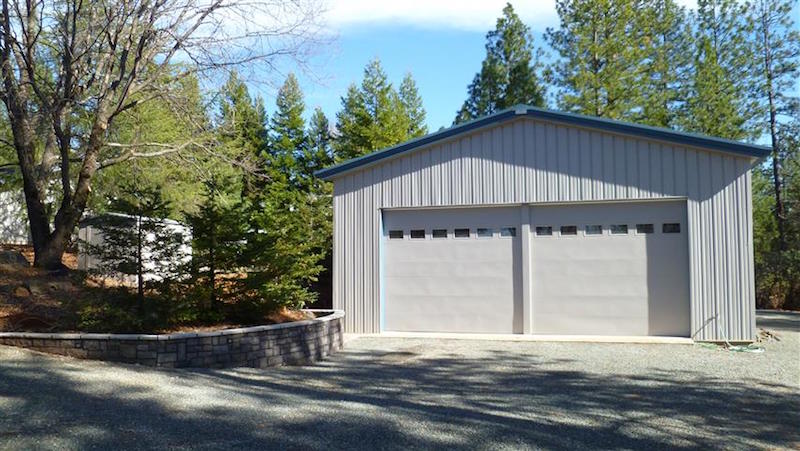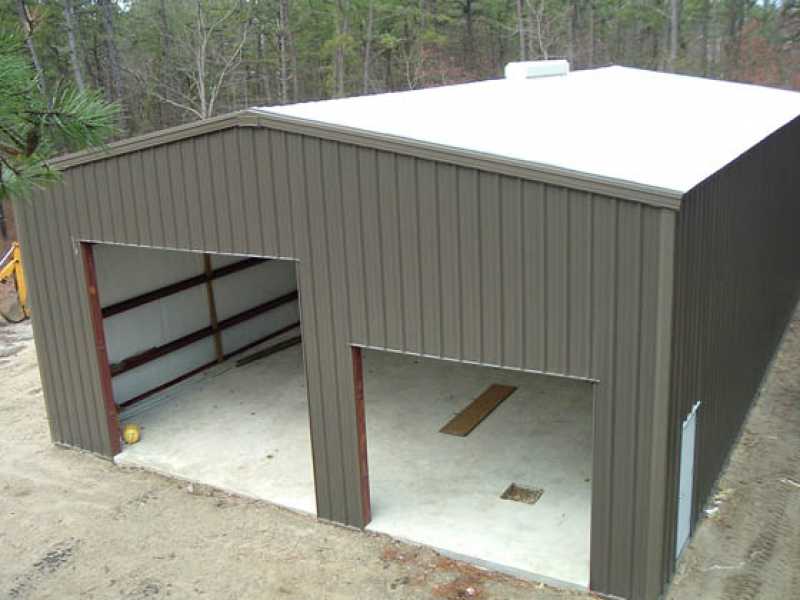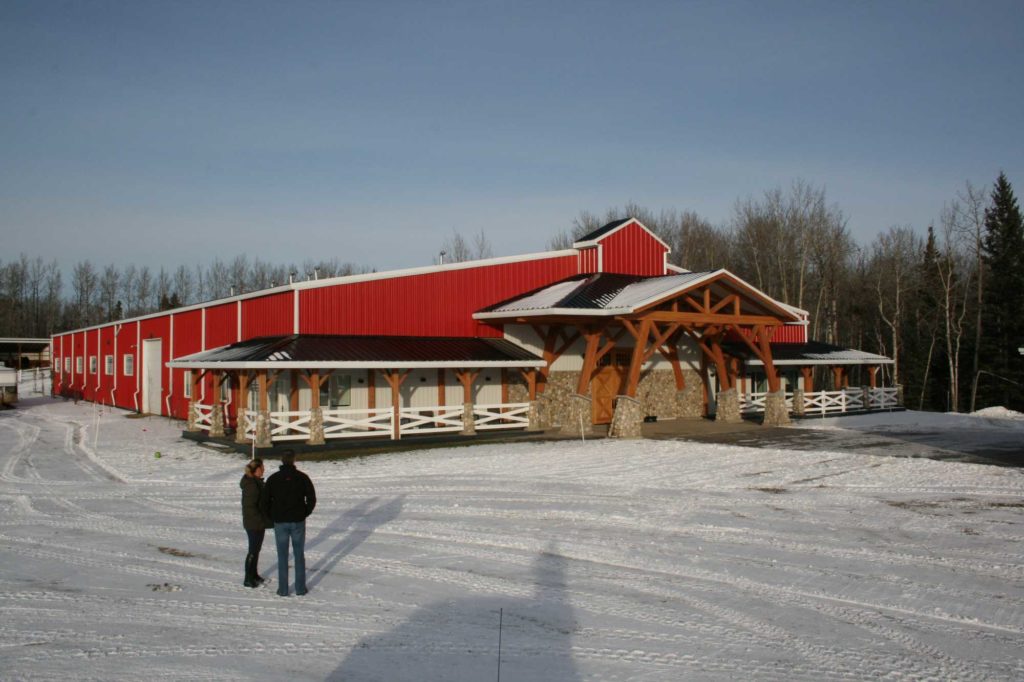Prefab Steel Building Garage
Prefab steel building garages are sustainable. Insulated metal garages are energy efficient and provide protection against various environmental elements. However, they do need to be properly designed, by professionals, for their intended use and location in order for them to deliver long-term solutions. Although strong and resilient when properly constructed, prefab metal garages, like other building materials, face their own environmental threats here and there. Condensation is one of these threats.
You should insulate your prefab metal garage with the appropriate metal building insulation when you are either cooling or heating the interior space.
In this article we will discuss:
What Is Condensation?
Condensation is a process in which water vapors turn into liquid. The higher the humidity, the greater the vapor content will be in the air. Humidity is the measure of the vapor content in the air in relation to the amount it can hold at that temperature. Warm air is capable of holding more moisture as compared to cold air. When the indoor humidity level goes above 60%, the vapors start turning into liquid and creates condensation. Indoor humidity can be controlled by bringing in outside air and mixing it with the inside air.
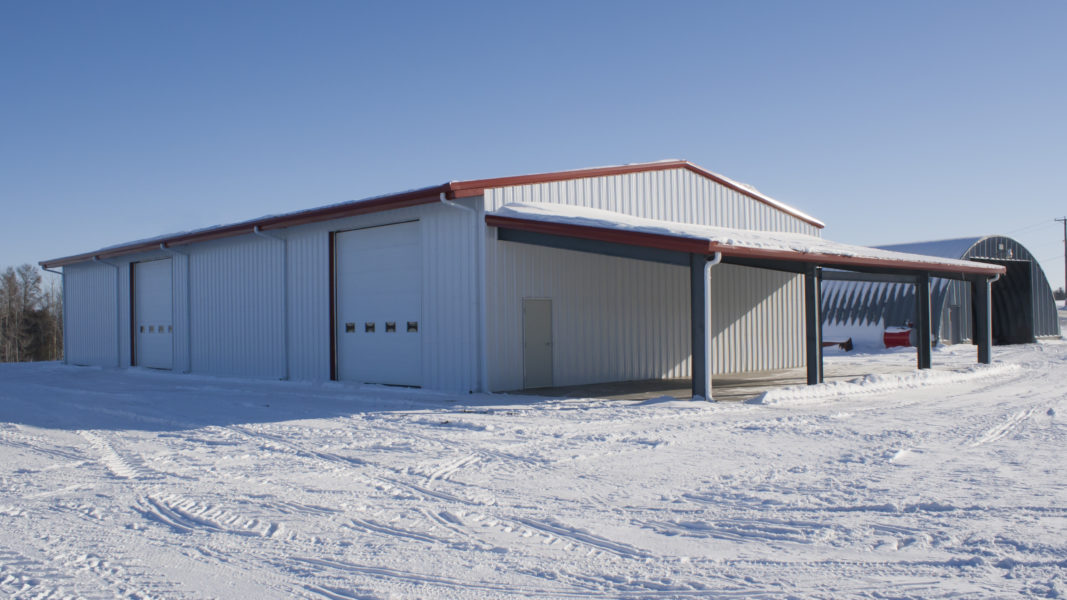
Air also has a saturation level, called a dew point. When the air reaches saturation, it is no longer able to hold the moisture that it contains, which leads to condensation.
Did you take all that in?
Basically, condensation mainly happens at cold surfaces, which is why metal garages are more vulnerable to it. When the cold temperature outside transfers through the metal, the warm indoor air reacts to the cold surface and forms water droplets. While ventilation can be used to minimize the issue, it won’t resolve it completely.
Condensation tends to occur more often in regions where temperatures fall below 35 degrees F over an extended period of time.
Types of Condensation
There are two main types of condensation. The visible, and the concealed.
Visible condensation appears on surfaces as water, frost, or ice. You may see it appear on insulation vapor retarders, skylights, cold water pipes, and cooling ducts.
Concealed condensation is more damaging and difficult to handle. It happens when moisture is passed to the interior space and condenses on a surface that has a temperature at or below the dew point.
If you’re wondering how either of these condensation types occur, they can occur for a number of reasons. To name a few, using the wrong vapor retarder, installing the vapor retarder incorrectly, installing the insulation incorrectly, leaky roof, improper structural air barrier, just to name a few.
What are the Consequences of Condensation?
The damage that condensation causes to a steel building is slow and happens over time. If the interior of the steel building remains mostly humid, then there are high chances that the building sustains damage from condensation, which would eventually require extensive renovation.
Here are some ways in which condensation could damage un-insulated metal garages:
Corrosion
The most detrimental risk of condensation in steel structures is corrosion. When the structure of the building is thoroughly corroded, the fixtures and metal walls become unstable, leaving it vulnerable to caving. Corrosion also makes a steel building look visually unappealing, which may ultimately affect its curb appeal as well.
Failed Insulation
A building which has a persistent condensation problem is also more likely to have a failed insulation system. This is because the condensation makes the insulation material damp, making it ineffective in handling the thermal energy.
Persistent Dampness
Condensation leads to persistent dampness in the building, which may lead to health problems for the occupants, especially the ones who are suffering from allergies, asthma, bronchitis and flu.
Pest Infestation
Damp and humid indoor conditions are perfect conditions to attract various pests in the building. Therefore, buildings that have persistent condensation problems are more likely to have a full-scale pest infestation from time to time.
How to Avoid Condensation Problems in Metal Garages?
Controlling condensation inside a metal building is one of the most critical aspects of maintaining the structural integrity of the building. In addition to that, condensation control is also important for the insulation system and thermal performance.
There are two ways in which condensation happens in a steel building, i.e., moist air and temperature differences. When the humidity in the air is high, the chance of condensation increases if the building is only designed to withstand humidity of only 50%. Similarly, condensation due to temperature differences happens when the warm indoor air reacts to the cold steel structure.
Condensation can virtually happen on any surface of the building, but the ones most vulnerable are windows, framing members and the roof.
Here are some common ways in which condensation is dealt with in metal garages:
Vapor Barriers
Vapor barriers are is one of the most popular ways in which condensation is prevented. These barriers are designed to seal the building and keep the moisture out. They act as radiant barriers and handle temperature differential and humidity together.
Vapor barriers should be installed on all the doors, windows, foundation sills and side-end laps in order to prevent condensation effectively.
Roof Protection
Often times, the insulation material underneath the roof comes into contact with the metal, which results in hidden condensation. Other ways in which condensation can happen is roof leaks and moisture seepage.
Therefore, to protect condensation from happening, it important to ensure that the roofing system is efficient and the insulation material isn’t touching the roofing metal. This can be done by using thermal blocks.
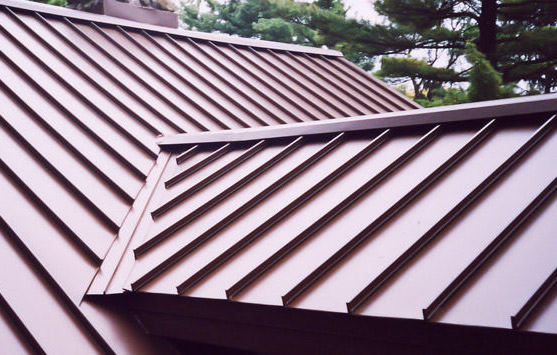
The use of a thermal block can save a metal building owner thousands of dollars in energy and building maintenance & costs. A thermal block is placed between the metal roof panel and the roof purlin or between the wall girt and wall panel. This block isolates the outer shell from the metal building’s inner steel frame.
Moisture Retarders
Moisture can also seep through the ground and cause condensation problems. This happens when there is a moisture problem in the concrete slabs due to groundwater or when the concrete slabs aren’t allowed to dry properly.
However, this problem can be resolved by installing moisture retarders underneath concrete slabs which prevent the moisture from reaching up. Other ways this problem can be dealt with is using draining materials, gravel and crushed rocks underneath the concrete slabs.
Ventilation
Make sure the indoor air can circulate. You can do this by adding fans to encourage evaporation. Make sure to vent gas/oil heaters directly outside. You can also add ceiling vents that enable warm moist air to escape.
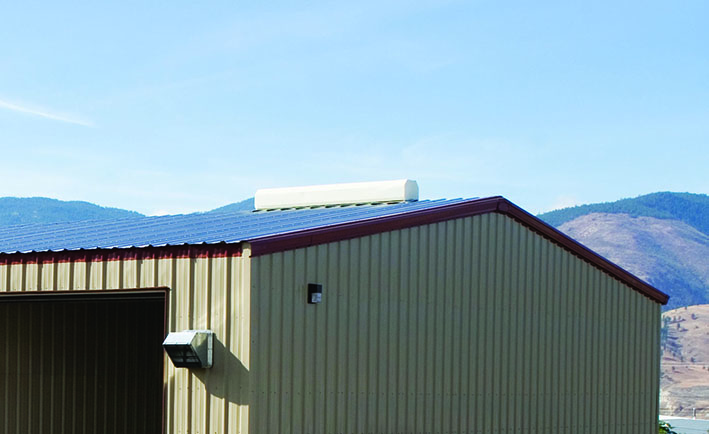
Continuous Insulation for Metal Buildings
Temperature regulation is one the primary ways in which condensation can be mitigated and the only way to regulate temperature is through continuous insulation.
Insulation keeps the temperature inside the building stable, regardless of the season or time of the day, and limits the dew formation on the surface of the metal structure.
Continuous insulation prevents the air—laden with moisture—from reaching the interior of the steel structure, thereby preventing condensation.
Metal building insulation options:
- Loose fill
- Batt and blanket
- Spray foam insulation
- Fiberglass insulation
- Reflective foil
- Rigid board
- Insulated panels
Loose fill Insulation
Loose fill insulation is made up of loose fibers or pellets. The insulation is blown into building cavities. It can be more costly than other types of insulation but it can get into corners where a blanket might not fit.
Batt and blanket Insulation
Batt & blanket insulation is made up of mineral fibers of rock wool or processed fiberglass. Batt insulation is inexpensive but it must be properly installed for full effectiveness. Some versions of batt insulation have a radiant barrier backing. This is the best type for metal buildings. Blanket insulation is a rolled insulation cut to specific widths/lengths.
Spray foam Insulation
Similar to loose fill insulation, spray foam insulation gets sprayed into the building cavities. It comes as a liquid with a foaming agent and polymer such as polyurethane. It can be sprayed into walls, floors, and ceilings where it then expands to fit the cavities. The insulation hardens to a solid plastic containing air cells.
Spray foam insulation can easily fill the nooks and crannies to make them airtight. Spray foam is ideal for odd spaces where you may have a lot of obstructions. It is more expensive than batt but it is a better air barrier than batt insulation.
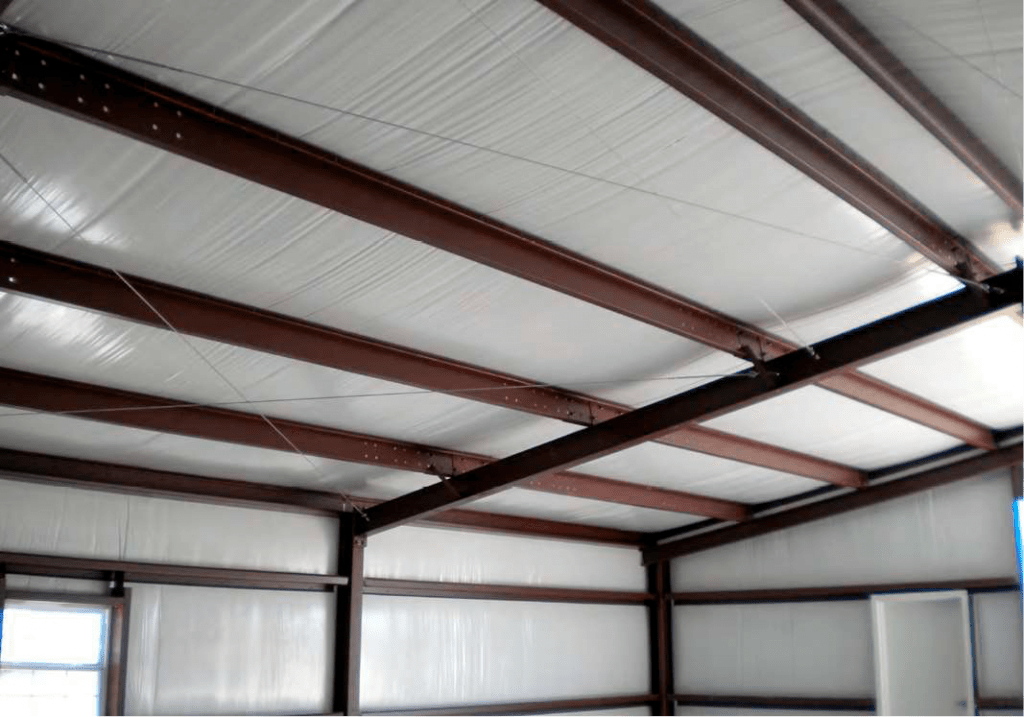 Fiberglass Insulation
Fiberglass Insulation
Fiberglass insulation is the least expensive and most popular method of insulating metal buildings. It comes in rolls or a “blanket” of material.
Because fiberglass insulation is a soft batting, fiberglass can sometimes attract nesting bugs, rodents, or birds, and may even absorb moisture. This is why metal building insulation is almost always provided with a protective facing or vapor barrier.
Not only does the vapor barrier offer protection against these concerns, it also adds a finished appearance to the inside of the building.
Reflective foil Insulation
This type of insulation is waterproof, and the reflective surface can really brighten the building interior. Reflective foil insulation can be more expensive than other insulation options, but it is clean and easy to install using staples, nails, or glue.
Rigid board Insulation
Foam rigid boards are a good option for any climate. They are typically made up of polyurethane, fiberglass, or polystyrene. This kind of insulation can be very effective for dampening noise as well as resisting heat and moisture.
If you plan to use this type of insulation, be sure to let your metal building provider know, so they can make the proper accommodations to the design such as longer fasteners and longer panel lengths.
Insulated Metal Panels
Insulated metal panels consist of an insulating foam core sandwiched between two metal panels. This single-component panel eliminates the need for any other type of insulation. Although the panel is more expensive than the other insulation options, insulated panels offer exceptional insulating properties, faster installation times, and a streamlined architectural appearance.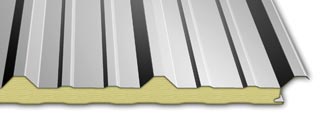
The 3-in-1 panel allows you to install your outer metal panel, insulation, and interior liner panel all at once, in one easy step. The indoor appearance is cleaner and more aesthetically pleasing than the other insulating options.
In short, you should ensure your metal garage is properly designed for your location and intended use in order to avoid unnecessary headache and loss in property value.
About Allied Steel Buildings
At Allied Steel Buildings, no project is too big or small. Whether you are building an insulated metal garage, barn, or skyscraper, we excel in creating pre-engineered steel building kit solutions for clients large and small. Discover the Allied Steel Buildings difference and enjoy the peace of mind that comes with a premier building company. Call us today at 1.877.997.8335 to learn more or fill out the quote form below to price your building.
